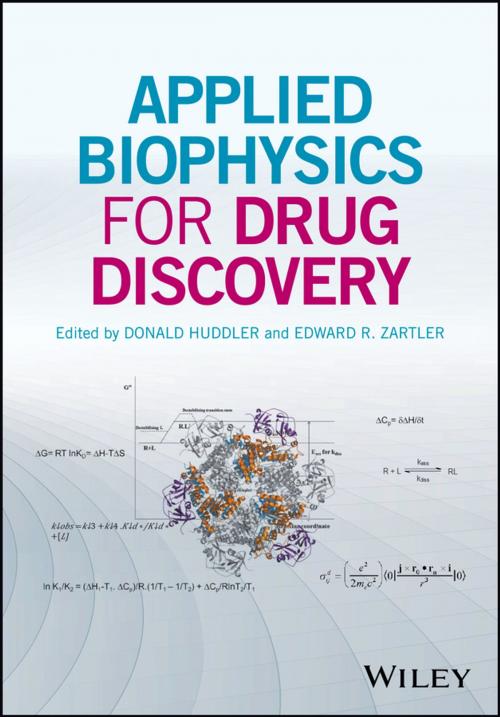Applied Biophysics for Drug Discovery
Nonfiction, Science & Nature, Science, Biological Sciences, Biophysics| Author: | ISBN: | 9781119099505 | |
| Publisher: | Wiley | Publication: | July 14, 2017 |
| Imprint: | Wiley | Language: | English |
| Author: | |
| ISBN: | 9781119099505 |
| Publisher: | Wiley |
| Publication: | July 14, 2017 |
| Imprint: | Wiley |
| Language: | English |
Applied Biophysics for Drug Discovery is a guide to new techniques and approaches to identifying and characterizing small molecules in early drug discovery. Biophysical methods are reasserting their utility in drug discovery and through a combination of the rise of fragment-based drug discovery and an increased focus on more nuanced characterisation of small molecule binding, these methods are playing an increasing role in discovery campaigns.
This text emphasizes practical considerations for selecting and deploying core biophysical method, including but not limited to ITC, SPR, and both ligand-detected and protein-detected NMR.
Topics covered include:
• Design considerations in biophysical-based lead screening
• Thermodynamic characterization of protein-compound interactions
• Characterizing targets and screening reagents with HDX-MS
• Microscale thermophoresis methods (MST)
• Screening with Weak Affinity Chromatography
• Methods to assess compound residence time
• 1D-NMR methods for hit identification
• Protein-based NMR methods for SAR development
• Industry case studies integrating multiple biophysical methods
This text is ideal for academic investigators and industry scientists planning hit characterization campaigns or designing and optimizing screening strategies.
Applied Biophysics for Drug Discovery is a guide to new techniques and approaches to identifying and characterizing small molecules in early drug discovery. Biophysical methods are reasserting their utility in drug discovery and through a combination of the rise of fragment-based drug discovery and an increased focus on more nuanced characterisation of small molecule binding, these methods are playing an increasing role in discovery campaigns.
This text emphasizes practical considerations for selecting and deploying core biophysical method, including but not limited to ITC, SPR, and both ligand-detected and protein-detected NMR.
Topics covered include:
• Design considerations in biophysical-based lead screening
• Thermodynamic characterization of protein-compound interactions
• Characterizing targets and screening reagents with HDX-MS
• Microscale thermophoresis methods (MST)
• Screening with Weak Affinity Chromatography
• Methods to assess compound residence time
• 1D-NMR methods for hit identification
• Protein-based NMR methods for SAR development
• Industry case studies integrating multiple biophysical methods
This text is ideal for academic investigators and industry scientists planning hit characterization campaigns or designing and optimizing screening strategies.















